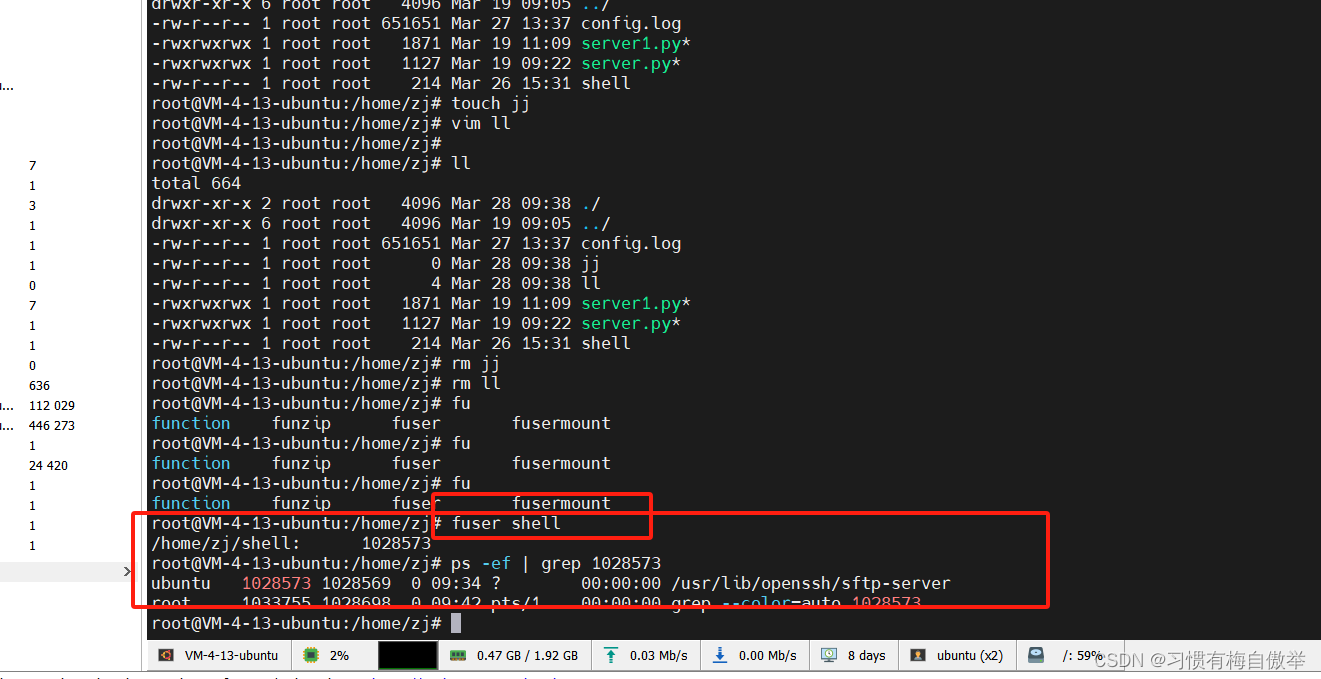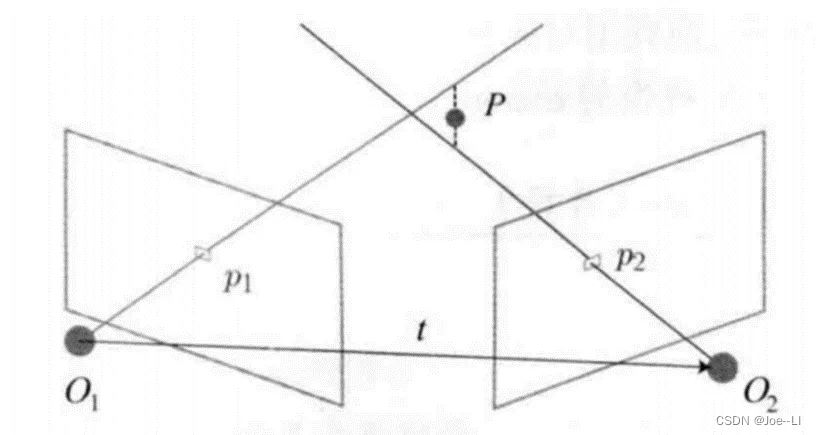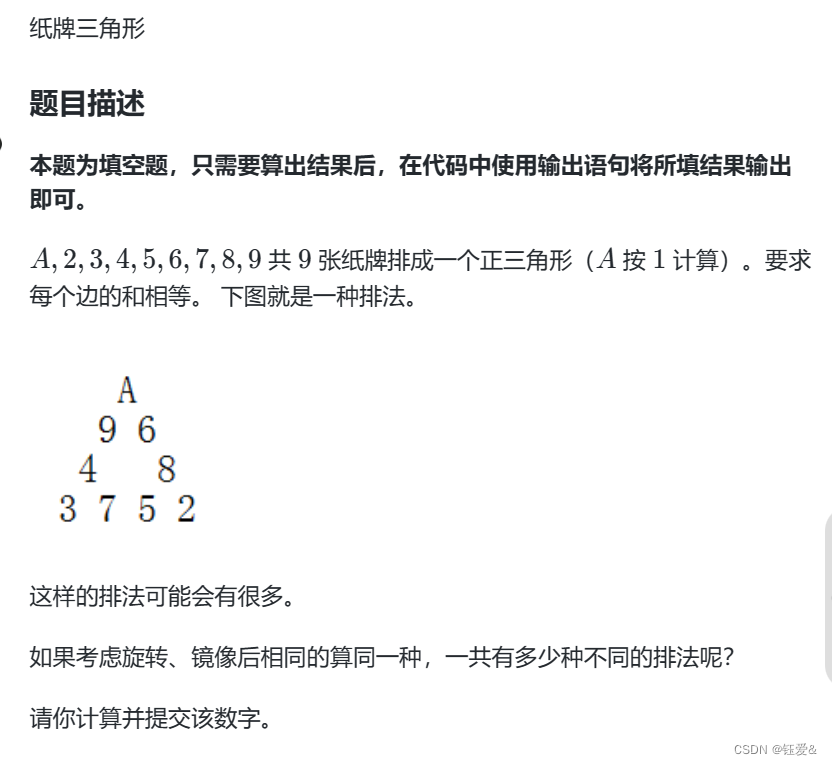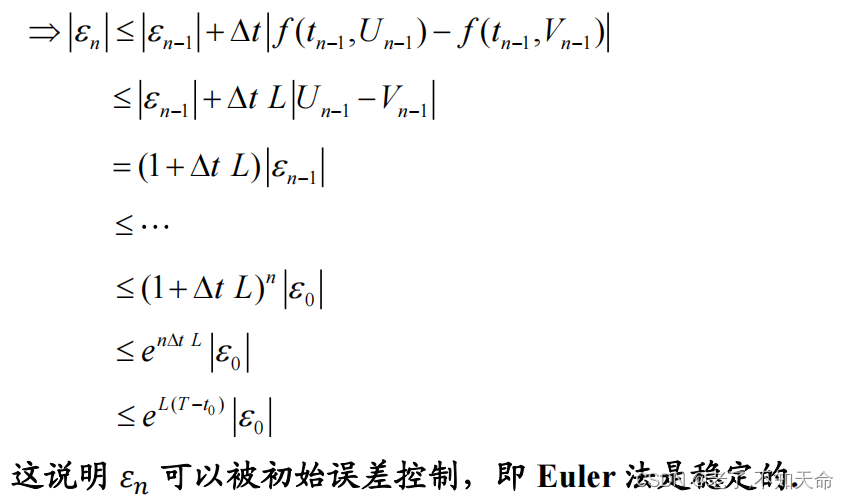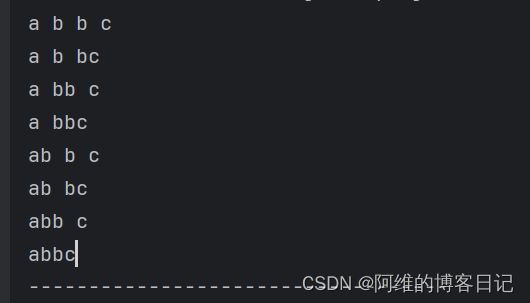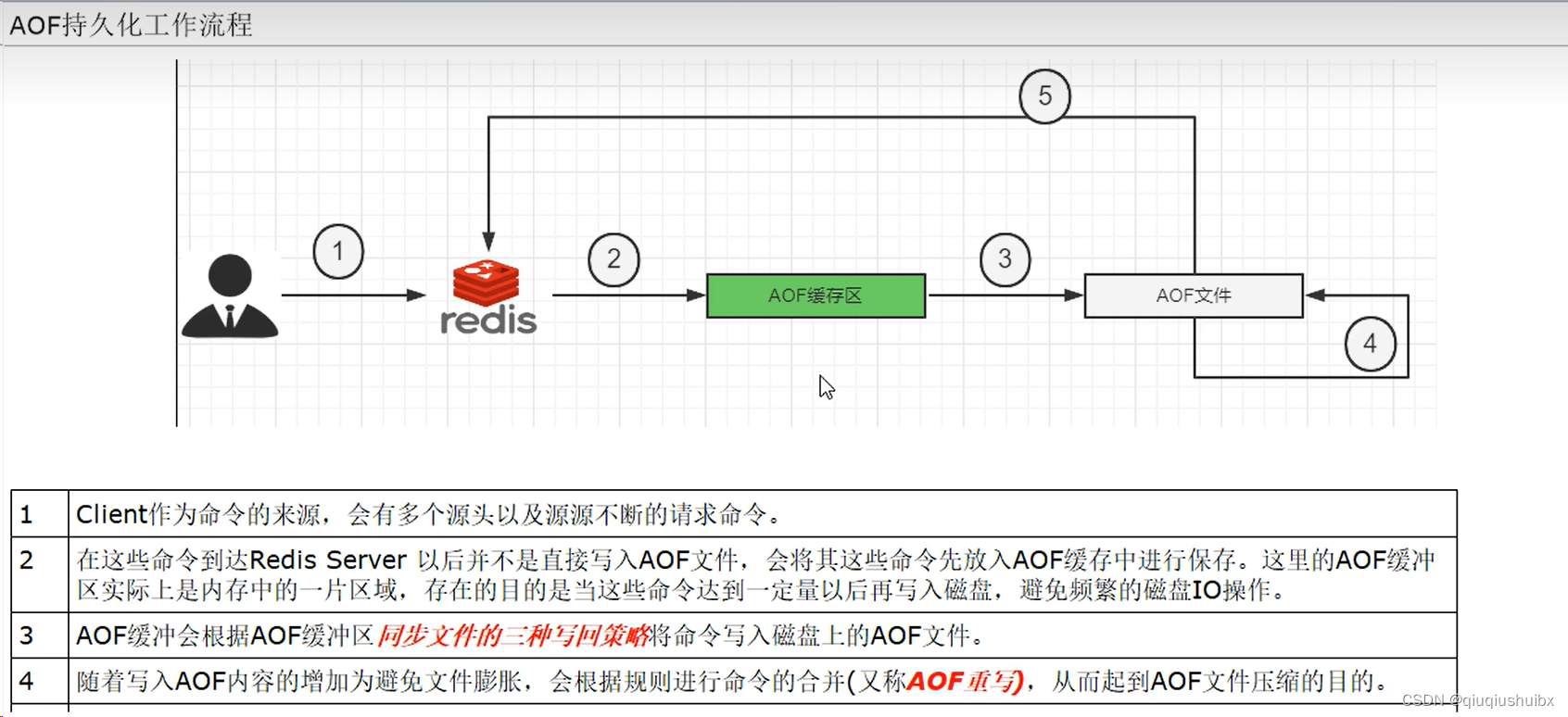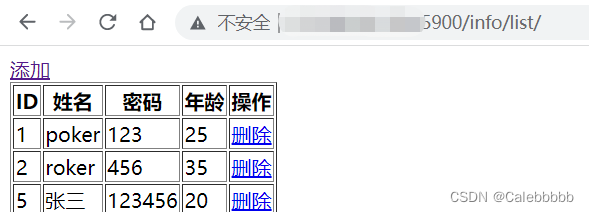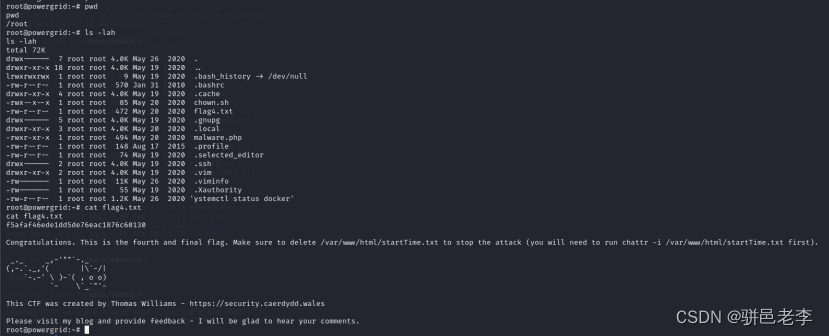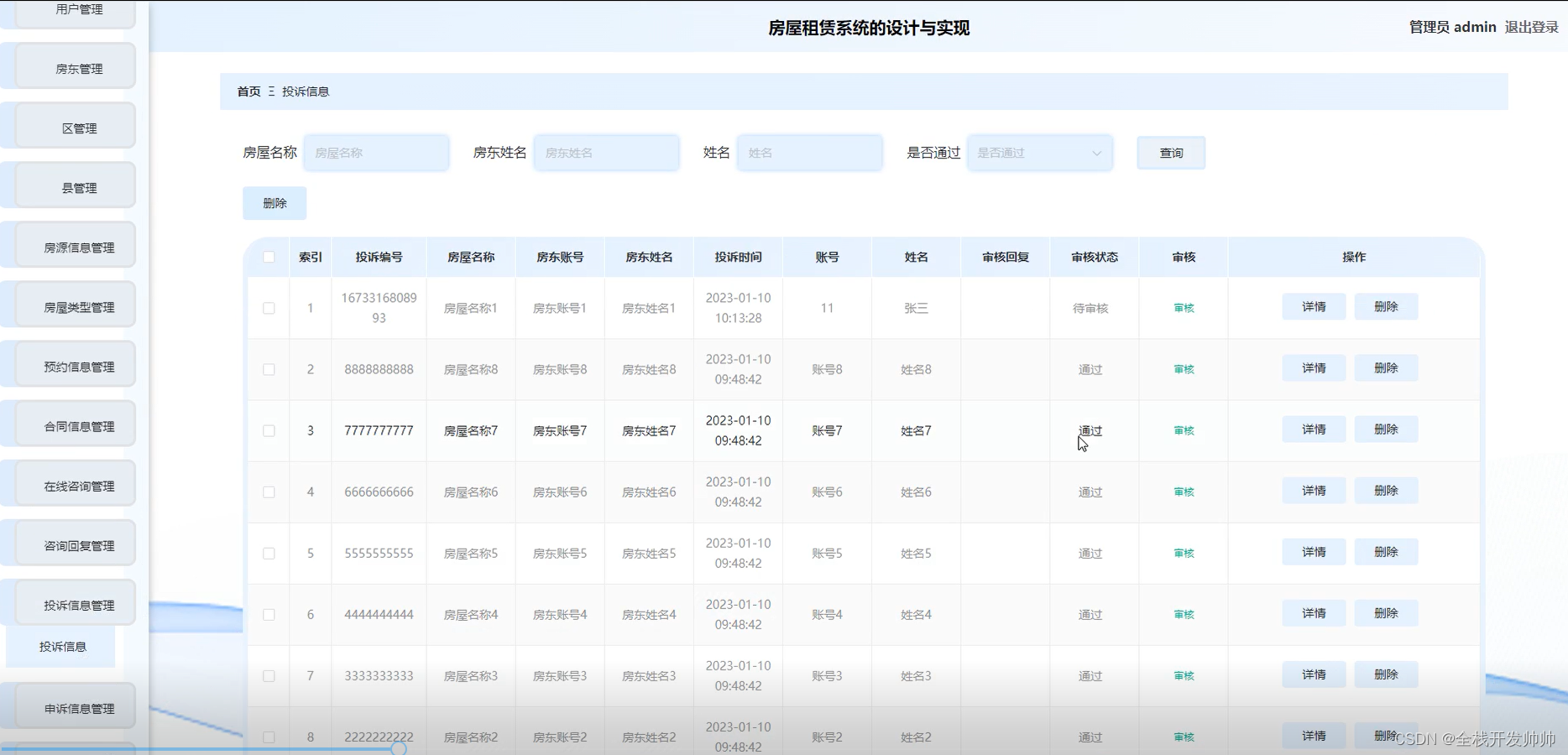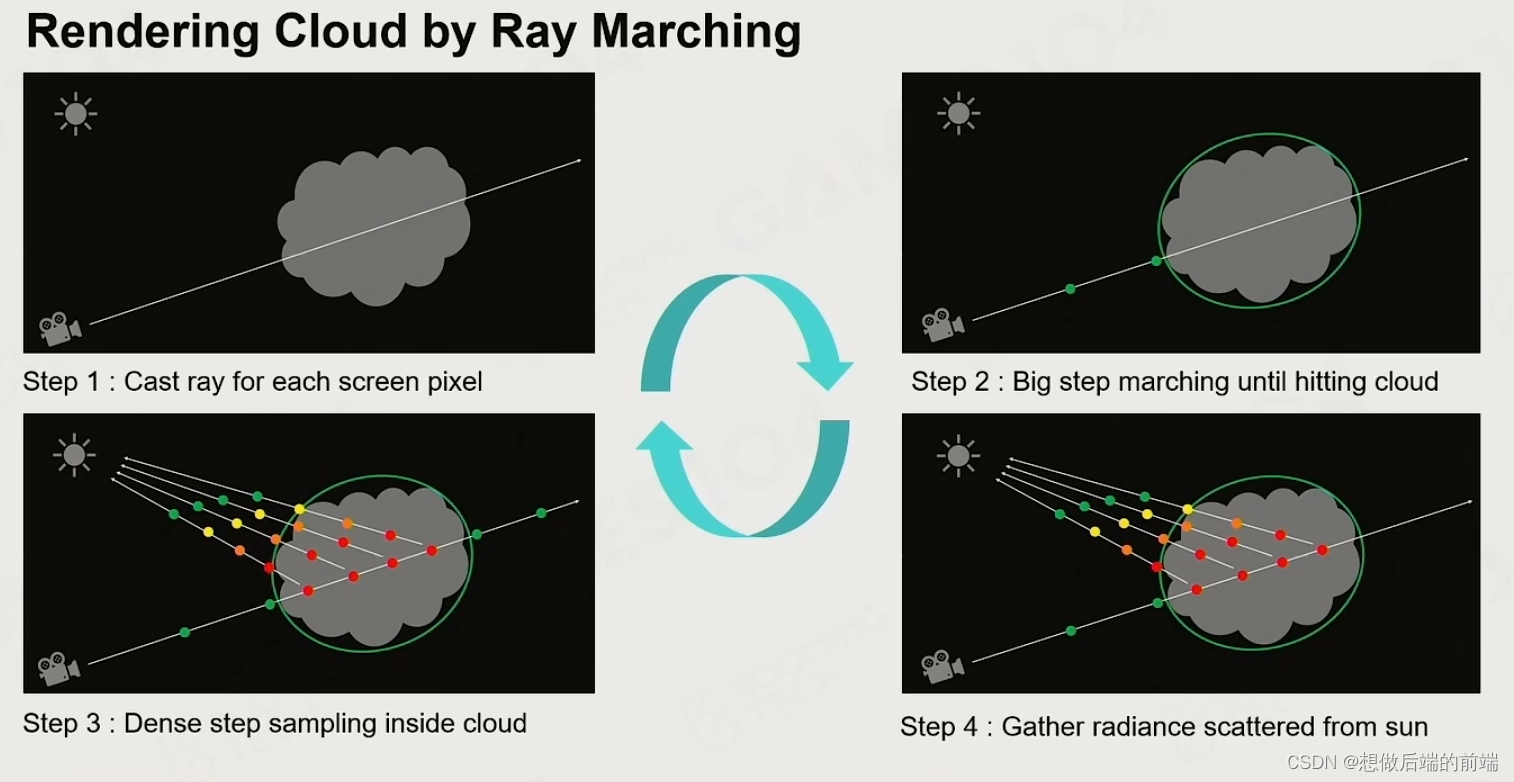文章目录
- example
- set(T value)
- createMap(t, value);
- set(ThreadLocal<?> key, Object value)
- ThreadLocalMap和Thread的关系
- 全貌
ThreadLocal是个很重要的多线程类,里面数据结构的设计很有意思,很巧妙。但是我们平时使用它的时候常常容易对它的使用感到迷惑,因为它跟其它的API很不一样,使用很不一样,设计也很不一样。
但是不用担心,这篇文章将从源码出发,一步步深入剖析ThreadLocal内部构造,理清楚它的来龙去脉。
example
还是从一个使用用例出发:
public class ThreadLocalExample {
// 声明一个 ThreadLocal 变量
private static ThreadLocal<Integer> threadLocal = new ThreadLocal<>();
public static void main(String[] args) {
// 在主线程中设置变量值
threadLocal.set(10);
// 创建并启动一个新线程
Thread thread = new Thread(() -> {
// 在新线程中获取变量值
System.out.println("ThreadLocal value in new thread: " + threadLocal.get());
});
thread.start();
// 在主线程中获取变量值
System.out.println("ThreadLocal value in main thread: " + threadLocal.get());
}
}
打印结果:
ThreadLocal value in main thread: 10
ThreadLocal value in new thread: null
可以看出同一个threadLocal 对象,在不同的线程里面调用get方法,获取的是不一样的结果!也就是说,threadLocal 对象存储了不同线程的私有变量。
现在可能我们还是觉得云里雾里,那现在我们就从源码出发,来一步步进行分析。
从threadLocal.set(10);方法进去:
set(T value)
/**
* Sets the current thread's copy of this thread-local variable
* to the specified value. Most subclasses will have no need to
* override this method, relying solely on the {@link #initialValue}
* method to set the values of thread-locals.
*
* @param value the value to be stored in the current thread's copy of
* this thread-local.
*/
public void set(T value) {
Thread t = Thread.currentThread();
ThreadLocalMap map = getMap(t);
if (map != null)
map.set(this, value);
else
createMap(t, value);
}
创建map或者设置key&value。
createMap(t, value);
先来看看假如map==null它怎么做:
/**
* Create the map associated with a ThreadLocal. Overridden in
* InheritableThreadLocal.
*
* @param t the current thread
* @param firstValue value for the initial entry of the map
*/
void createMap(Thread t, T firstValue) {
t.threadLocals = new ThreadLocalMap(this, firstValue);
}
这里把new出来的ThreadLocalMap赋值给了t.threadLocals,t是个线程。
/**
* Construct a new map initially containing (firstKey, firstValue).
* ThreadLocalMaps are constructed lazily, so we only create
* one when we have at least one entry to put in it.
*/
ThreadLocalMap(ThreadLocal<?> firstKey, Object firstValue) {
table = new Entry[INITIAL_CAPACITY];
int i = firstKey.threadLocalHashCode & (INITIAL_CAPACITY - 1);
table[i] = new Entry(firstKey, firstValue);
size = 1;
setThreshold(INITIAL_CAPACITY);
}
这里是ThreadLocalMap的构造方法,可以看出ThreadLocal作为key,传进来的参数作为value。
set(ThreadLocal<?> key, Object value)
现在回退一下,看看map.set(this, value);做了什么:
/**
* Set the value associated with key.
*
* @param key the thread local object
* @param value the value to be set
*/
private void set(ThreadLocal<?> key, Object value) {
// We don't use a fast path as with get() because it is at
// least as common to use set() to create new entries as
// it is to replace existing ones, in which case, a fast
// path would fail more often than not.
Entry[] tab = table;
int len = tab.length;
int i = key.threadLocalHashCode & (len-1);
for (Entry e = tab[i];
e != null;
e = tab[i = nextIndex(i, len)]) {
ThreadLocal<?> k = e.get();
if (k == key) {
e.value = value;
return;
}
if (k == null) {
replaceStaleEntry(key, value, i);
return;
}
}
tab[i] = new Entry(key, value);
int sz = ++size;
if (!cleanSomeSlots(i, sz) && sz >= threshold)
rehash();
}
这里有必要知道的是该方法位于ThreadLocalMap类里面:
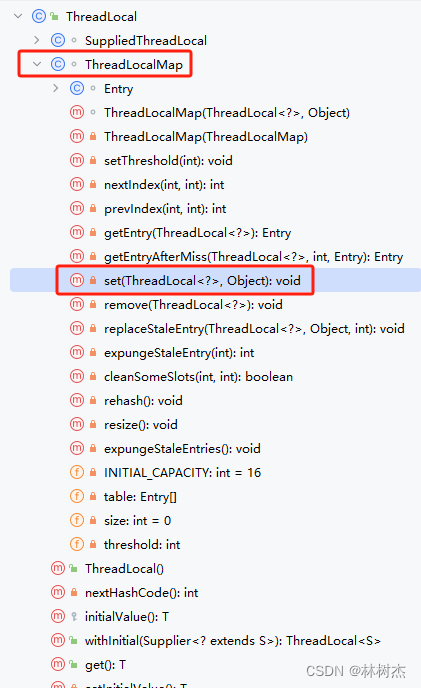
看下Entry 的实现代码:
/**
* The entries in this hash map extend WeakReference, using
* its main ref field as the key (which is always a
* ThreadLocal object). Note that null keys (i.e. entry.get()
* == null) mean that the key is no longer referenced, so the
* entry can be expunged from table. Such entries are referred to
* as "stale entries" in the code that follows.
*/
static class Entry extends WeakReference<ThreadLocal<?>> {
/** The value associated with this ThreadLocal. */
Object value;
Entry(ThreadLocal<?> k, Object v) {
super(k);
value = v;
}
}
Entry 是个弱引用的子类。设计为弱引用,说明它跟内存泄漏有关。这里先不深入探讨。
到这里我们可以得知set方法执行的时候以ThreadLocal对象作为key,以value入参作为value,传到了ThreadLocal的 Entry[] 里面,设置的时候根据threadLocal对象的hash值来确定其在ThreadLocalMap中的位置。
ThreadLocalMap和Thread的关系
还记得前面的这行代码吗?
t.threadLocals = new ThreadLocalMap(this, firstValue);
它createMap(t, value);里面,来看看ThreadLocalMap和Thread的关系:
java/lang/Thread.java
/* ThreadLocal values pertaining to this thread. This map is maintained
* by the ThreadLocal class. */
ThreadLocal.ThreadLocalMap threadLocals = null;
也就是说ThreadLocalMap 其实是属于线程的成员变量。
全貌
其实到这里,我们已经有能力知道整体的数据结构的设计了,下面我们通过前面给出的example代码,通过画图的方式把它们之间关系全貌绘制出来:
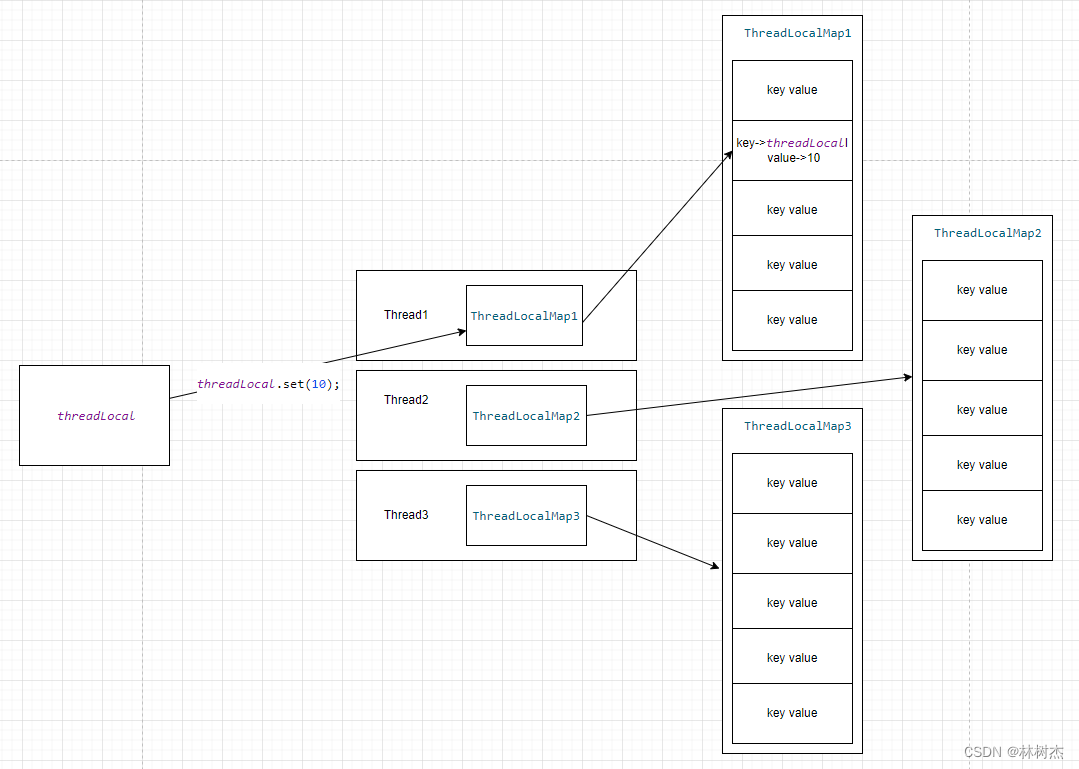
ThreadLocalMap里面是Entry数组,那么其它Entry元素怎么用呢?
这是个好问题,我们迭代下前面的example:
class ThreadLocalExample {
// 声明一个 ThreadLocal 变量
private static ThreadLocal<Integer> threadLocal = new ThreadLocal<>();
private static ThreadLocal<String> threadLocal2 = new ThreadLocal<>();
public static void main(String[] args) {
// 在主线程中设置变量值
threadLocal.set(10);
threadLocal2.set("hello");
// 创建并启动一个新线程
Thread thread = new Thread(() -> {
// 在新线程中获取变量值
System.out.println("ThreadLocal value in new thread: " + threadLocal.get());
System.out.println("ThreadLocal2 value in new thread: " + threadLocal2.get());
});
thread.start();
// 在主线程中获取变量值
System.out.println("ThreadLocal value in main thread: " + threadLocal.get());
System.out.println("ThreadLocal2 value in main thread: " + threadLocal2.get());
}
}
运行结果:
ThreadLocal value in main thread: 10
ThreadLocal value in new thread: null
ThreadLocal2 value in main thread: hello
ThreadLocal2 value in new thread: null
再来一个图:
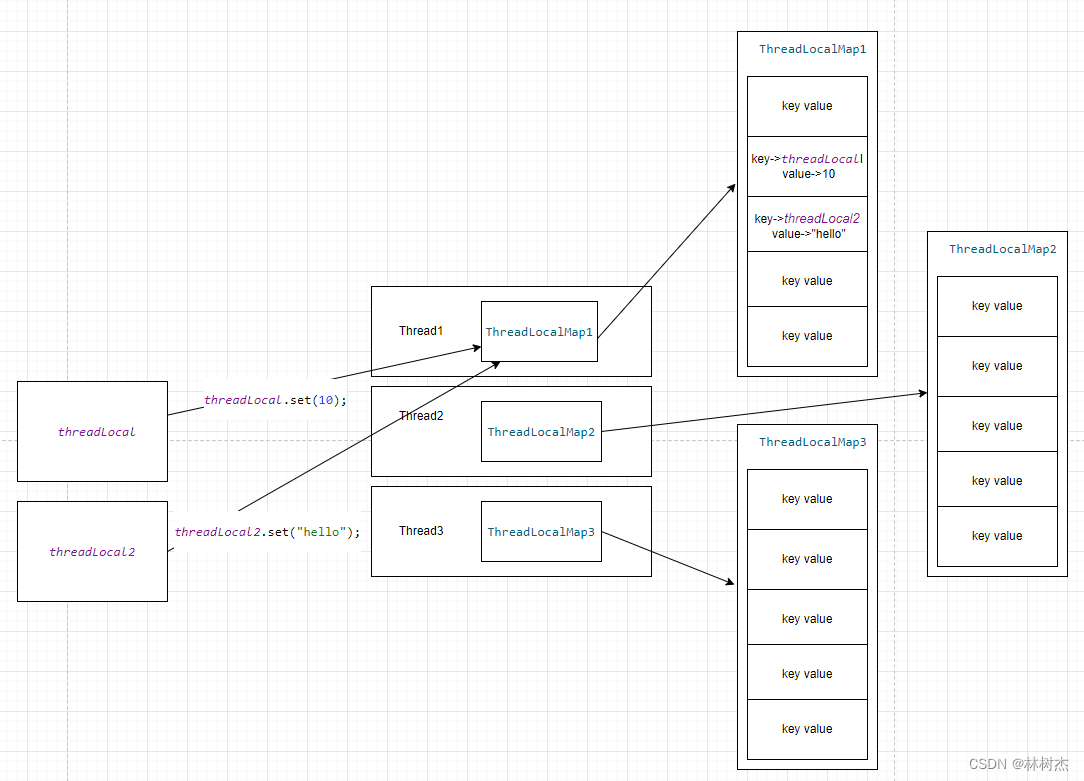
一图胜千言,到这里我们应该对ThreadLocal这个线程类的整体有个清晰的把握了。
enjoy it。

